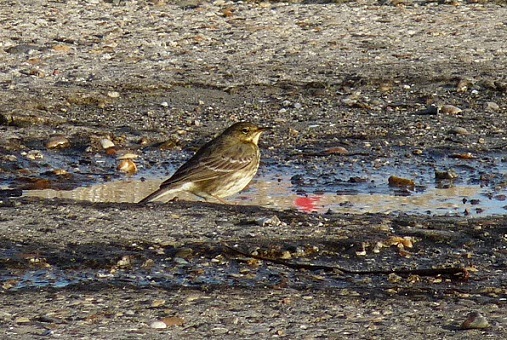January - TWO-BARRED CROSSBILL (The Netherlands); a nice male successfully twitched and seen well in a group of Common Crossbills.
February - Razorbill (Ostend); a new species for my Belgian list. An adult winter constantly diving in the harbour.
March - Black Grouse (Hautes-Fagnes); another Belgian tick. This species is almost extinct in Belgium but a long wait eventually produced two distant males feeding in the treetops.
April - Tawny Owl (Brussels); a juvenile seen well in a Brussels park having located it by its begging call.
May - Red-necked Grebe (Denmark); an impressive concentration of these beautiful birds I rarely get to see in summer plumage at a small breeding colony on the outskirts of Copenhagen.
June - TATAUPA TINAMOU (Cristalino Jungle Lodge); a female with chick seen extremely well on the Serra Nova trail.
July - PAVONINE QUETZAL (Cristalino Jungle Lodge); finally, distant but unmistakeable looks at a male perched above the Castanheira trail.
 |
| Spangled Cotinga at Cristalino Jungle Lodge |
August - Crested Eagle (Cristalino Jungle Lodge); great looks at and adult both perched and flying over the Rio Teles Pires.
September - Pomarine Skua (Ostend); good views of a dark juvenile passing close inshore.
October - Firecrest (Belgium); traditionally the best month for them, they seemed to be absolutely everywhere whenever I went birding this month, including in the park right in the centre of Brussels.
November - Pied Wheatear (Mortsel, Flanders); an easy twitch for a first-winter male sitting on a fence and showing extremely well as soon as I arrived. Very nice to finally remove the question mark next to this species after the only other one I have ever seen, fourteen years ago in Israel, was dismissed by all the local birders as a misidentication.
December - GREAT BUSTARD (Germany); wonderful views of 50% of the remaining German population of this vulnerable species and a long overdue lifer.
My bird of the year just has to be Great Bustard as I was surprised at how easily we found them yet we were extremely lucky to find such a big group so close to the road. We also got to see the whole group in flight and one of the males doing display gestures, and they were even more beautiful than I had imagined. My 2014 list for Europe reached 229 species, 206 of which were in Belgium. I added another 415 in Brazil taking the year's total to 644, of which 10 were lifers. Here's hoping 2015 will bring some more and wishing you all a happy and birdy New Year.




































